Europe is full of natural wonders, but if you want to see just how dreamily beautiful the continent can get, the country at the top of your bucket list should be Switzerland.
Here, nature pulls out all the stops, serving up landscapes so eye-opening they seem unreal — as if conjured by CGI.
What makes Switzerland even more potent as a wanderlust igniter is the sheer range of scenery that unfolds as you explore, from shimmering mountain lakes to rippling meadows.
There’s majesty, too: titanic mountains tower over storybook villages and awe-inspiring rivers crash past medieval castles.
Even better, the ever-efficient [Swiss ](https://www.independent.co.uk/travel/europe/switze…
Europe is full of natural wonders, but if you want to see just how dreamily beautiful the continent can get, the country at the top of your bucket list should be Switzerland.
Here, nature pulls out all the stops, serving up landscapes so eye-opening they seem unreal — as if conjured by CGI.
What makes Switzerland even more potent as a wanderlust igniter is the sheer range of scenery that unfolds as you explore, from shimmering mountain lakes to rippling meadows.
There’s majesty, too: titanic mountains tower over storybook villages and awe-inspiring rivers crash past medieval castles.
Even better, the ever-efficient Swiss present everything on a plate, with cable cars, observation decks and funicular railways dotted across the land to help you reach the best vantage points and angles for those all-important vacation photos.
1. Two Lakes Bridge
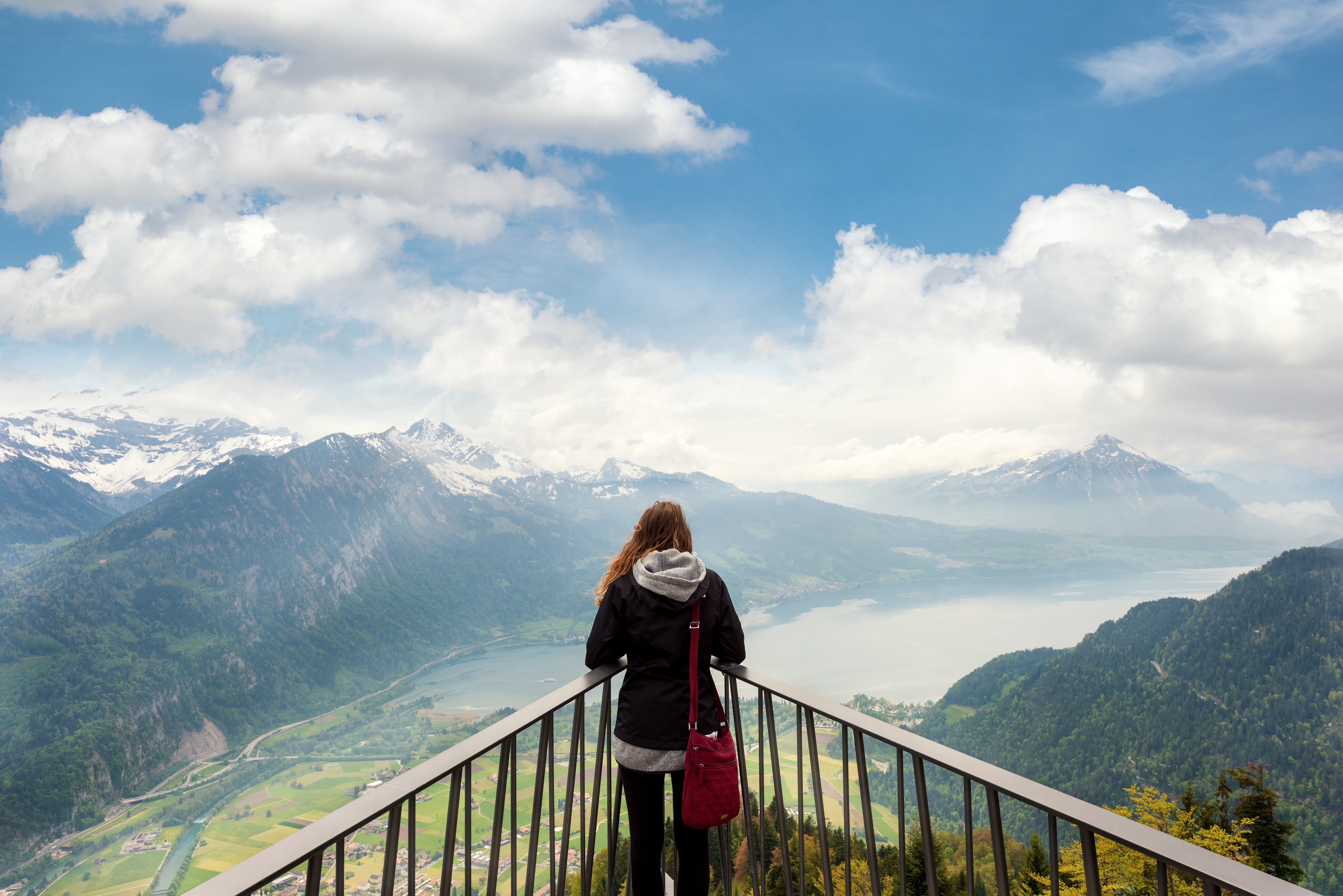
Two Lakes Bridge viewpoint offers gasp-inducing panoramas from Harder Kulm mountain (ake1150 - stock.adobe.com)
As the name suggests, Two Lakes Bridge offers views of a brace of lakes.
While they are magnificent bodies of water, this viewpoint on Harder Kulm mountain — believe it or not — actually undersells itself.
The gasp-inducing panorama from this lofty perch (officially “Zwei-Seen-Steg”), some 4,333ft above sea level, also includes three of the world’s most stunning peaks and a beautiful town far below.
What’s more, the journey to the bridge on the Harderbahn funicular railway is a showstopper in its own right, with the wooden train, dating to 1908, climbing around 2,300ft up the flank of Harder Kulm in just ten minutes.
The viewpoint juts out dramatically beside the Harder Kulm Panorama Restaurant and even includes a glass-floor section for an extra adrenaline kick — plus a quirky cow statue, in case anyone feels there aren’t quite enough talking points already.
Gaze outwards and you’ll see deep-blue Lake Thun to the right and the slightly smaller Lake Brienz to the left, glacial minerals making its waters a milky turquoise. The pair once formed a single vast lake, the divide coming courtesy of sediments deposited by the Lütschine River.
Above them tower three mighty mountains — the Mönch (13,474ft), Jungfrau (13,642ft), and the legendary Eiger (13,015ft) — that form one of the Alps’ most memorable skylines. Far below lies the picturesque resort town of Interlaken.
Two lakes, infinitely scenic.
Where to stay
The Royal St. Georges Hotel Interlaken - MGallery Collection is handy for the base station of the Harderbahn funicular and boasts its own set of amazing views.
**Read more: **Seven cozy fall getaways to savor autumn charm ahead of the holidays
2. Aletsch Glacier
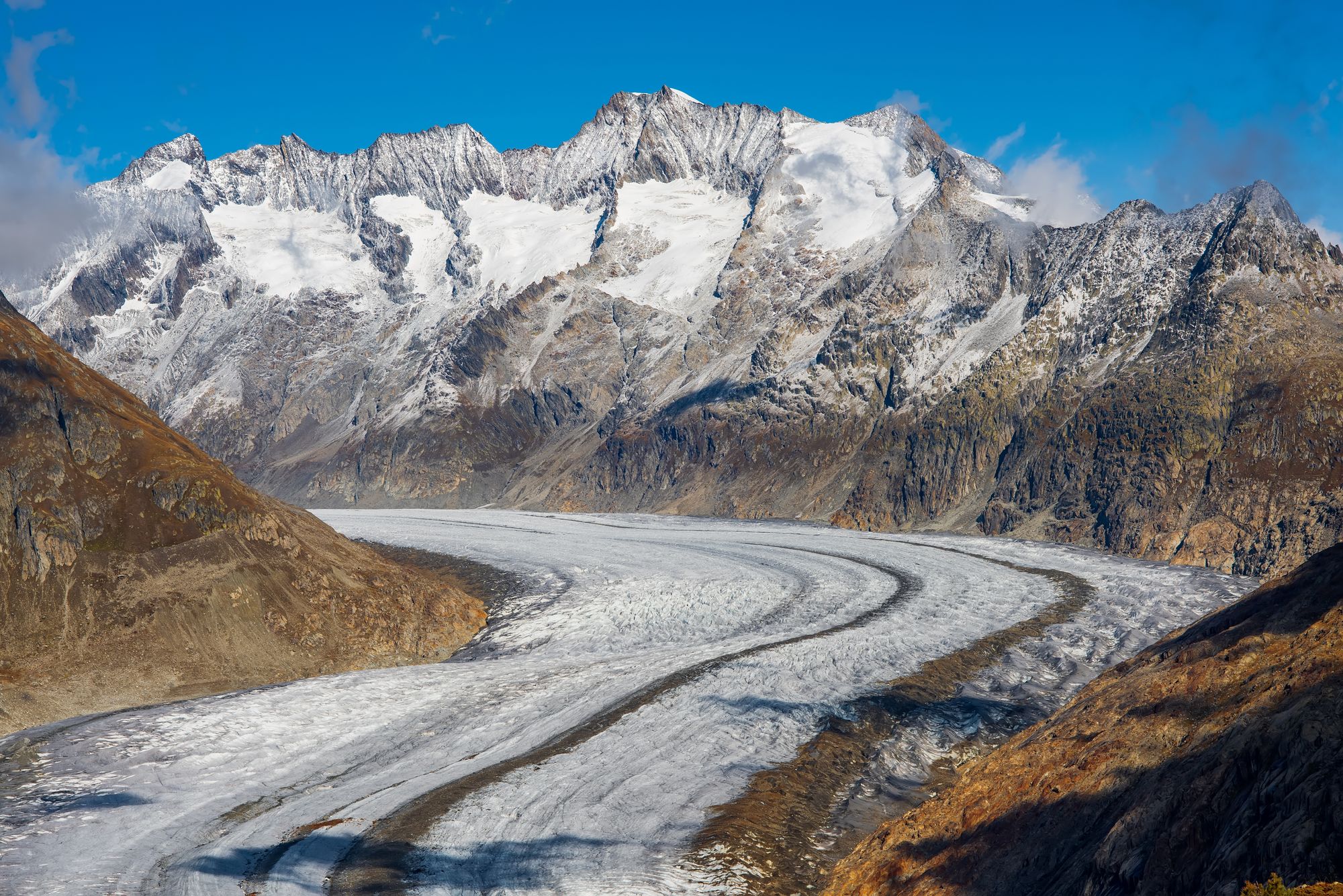
Aletsch Glacier flows for roughly 14 miles through the heart of the Bernese Alps (haidamac - stock.adobe.com)
Welcome to the Ice Age.
Aletsch Glacier is Europe’s biggest glacier, containing a staggering 11 billion tons of ice.
It flows for roughly 14 miles through the heart of the Bernese Alps in southern Switzerland’s Valais. Some of the ice near the terminus of the glacier, part of the Swiss Alps Jungfrau-Aletsch Unesco World Heritage site, is believed to be more than 1,000 years old.
To gaze upon this jaw-dropping slice of geology, you don’t need to look at pictures taken by a daring climber as there are several excellent viewing platforms available. The three best are Moosfluh, Bettmerhorn and Eggishorn in Valais – each accessible via cable car from the nearby alpine villages of Fiesch, Bettmeralp, and Riederalp.
If you’re feeling adventurous, you can see the glacier up close on a guided trek using ropes and crampons.
But whether you’re clambering over it or gazing upon it from high above, the Aletsch Glacier’s scale will send shivers down your spine — in the best possible way.
Where to stay
Hotel Waldhaus in the village of Bettmeralp is located mere moments from cable car access to glacier viewing decks. In the winter it offers ski-to-door access.
**Read more: **Five bucket-list train journeys that showcase America’s most breathtaking scenery
3. The Furka Pass

The Furka Pass, immortalized by Bond movie Goldfinger, offers stunning views, with dramatic drops below and towering, craggy peaks all around (Leonid Andronov - stock.adobe.com)
The Furka Pass is a road with a license to thrill — a high-altitude, hairpin-laden pass immortalized by the 1964 Bond movie Goldfinger, in which it was used as a filming location.
Watching 007 being chased in his Aston Martin DB5 by Tilly Masterson in her Ford Mustang is one of the all-time great scenes — one of its bends is still called the “James Bond Strasse” — but the road was arguably the real star of the show.
Opened in 1866 as a military route, it links the village of Gletsch in Obergoms with Realp and Andermatt in neighboring Uri.
As the road snakes to a height of 7,969 feet it offers stunning views of the Rhône Glacier, with dramatic drops below and towering, craggy peaks all around.
To follow Bond’s tire tracks, you’ll need to visit between June and October. Either side of these months the road is usually closed to heavy snowfalls. A tunnel bypass keeps the route active in the winter.
Where to stay
Charming Hotel Furka is located just a few miles from the legednary pass.
**Read more: **A Euro trip without leaving America: Seven US towns that look exactly like places in Europe
4. Lauterbrunnen Valley
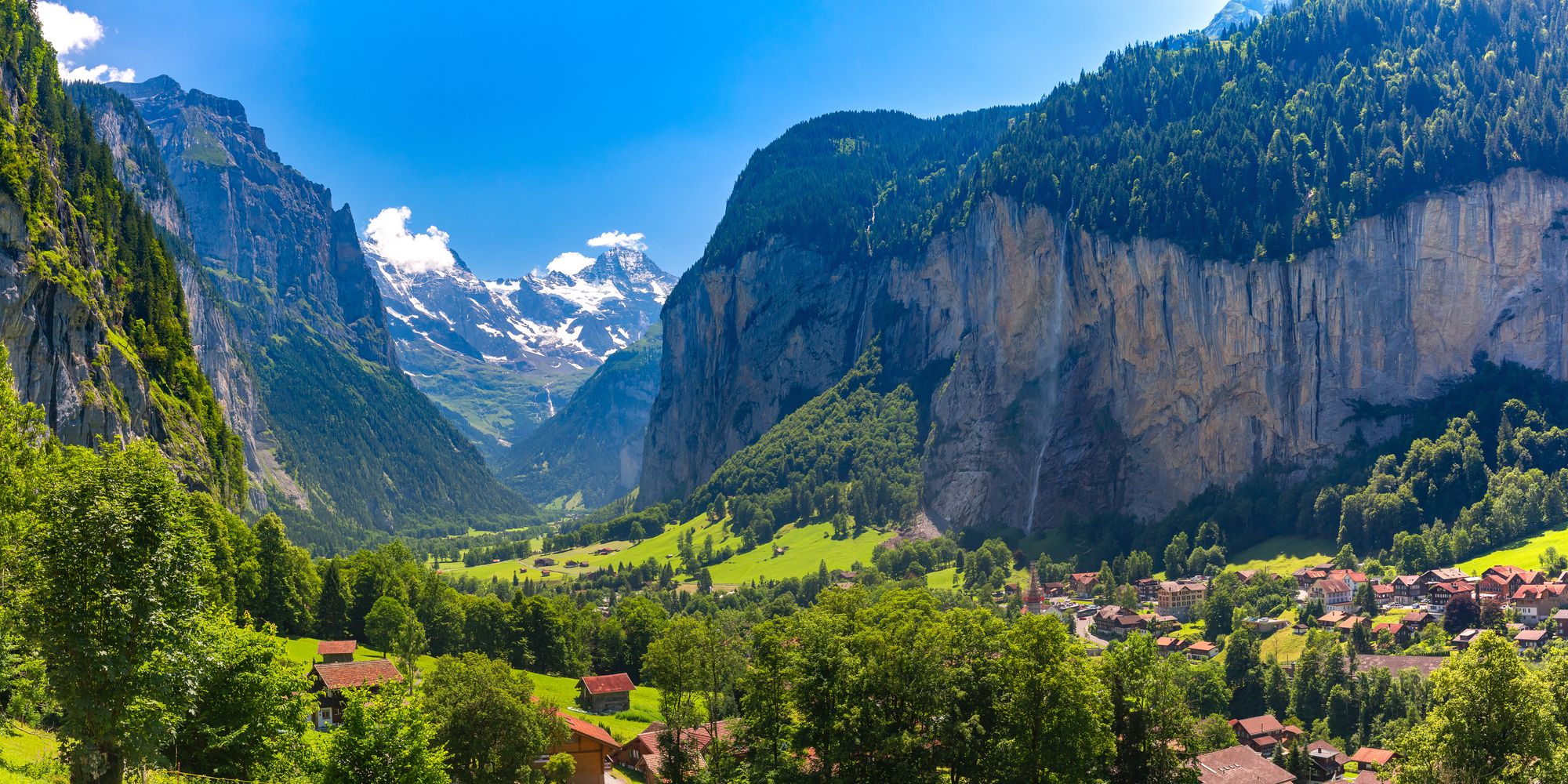
Staubbach Falls, which plunges 980 feet in a single sheer drop (Kavalenkava - stock.adobe.com)
In Lauterbrunnen Valley, between Interlaken and the Jungfrau Massif, everything that makes Switzerland special seems to have been distilled into one magical place — somewhere so impossibly picturesque it’s hard to believe it wasn’t conjured up by AI for a fantasy movie.
At ground level — though the valley floor itself sits at an altitude of 2,610 feet — you’ll find mesmerizing meadows gently rippling around the village of Lauterbrunnen, whose name means “loud springs.”
It’s a fitting description, as 72 waterfalls thunder down the almost 3,000-foot-high cliffs that frame this dramatic U-shaped gorge.
The most famous is Staubbach Falls, which plunges 980 feet in a single sheer drop, making it one of the highest free-falling waterfalls in Europe. It’s unmissable, but so too is magnificent Mürrenbachfall, which tumbles 2,460 feet over five separate cascades to earn the title of Switzerland’s tallest waterfall.
Where to stay
Hotel Silberhorn offes breathtaking views across Lauterbrunnen Valley.
**Read more: **Nine of Portugal’s most beautiful natural wonders — from castaway islands to otherworldly caves
5. **Lake Oeschinen **
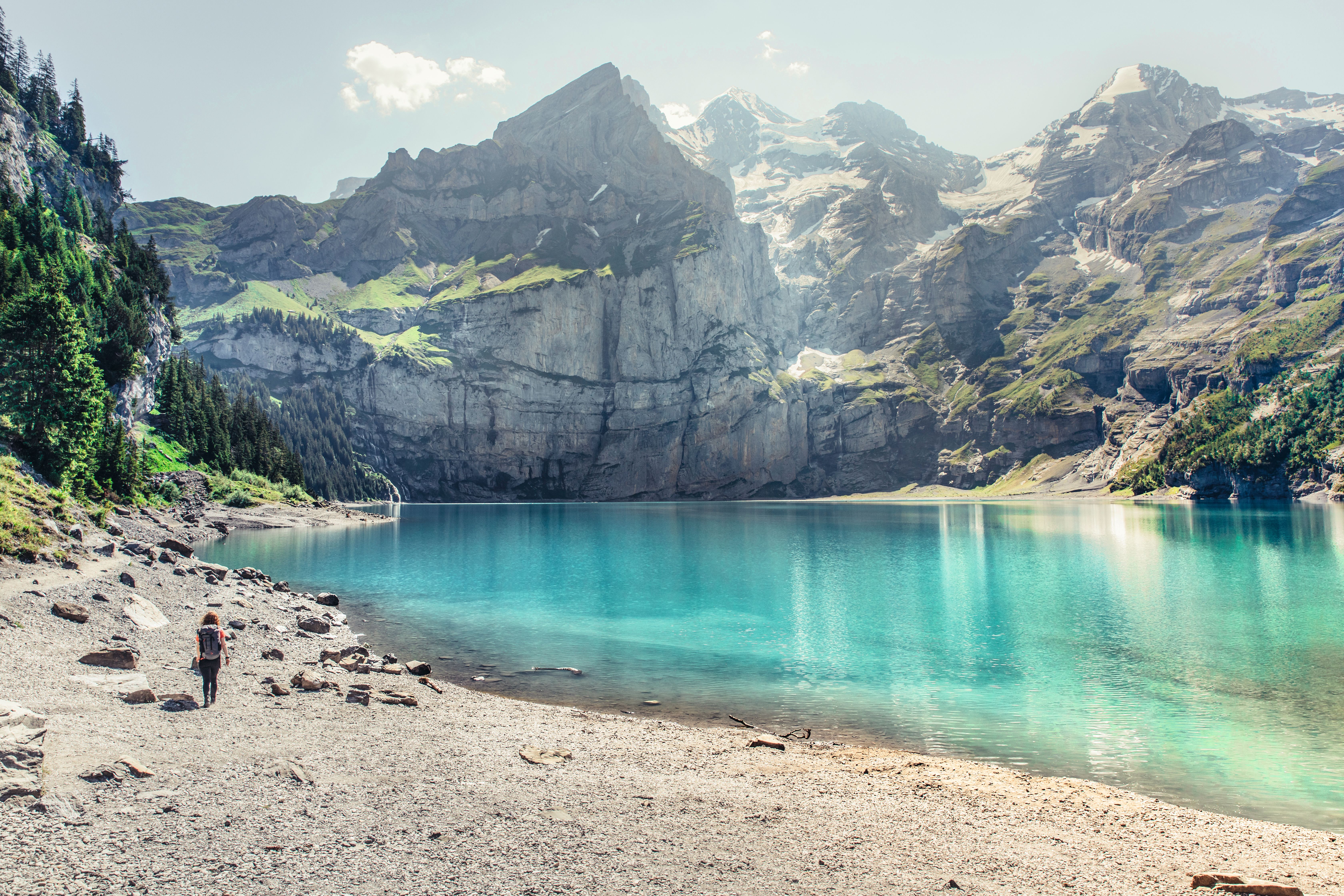
Lake Oeschinen is often hailed as one of Switzerland’s most beautiful mountain lakes (Switzerland Tourism/Stefan Tschumi)
Lake Oeschinen is relatively small — roughly 0.43 square miles — but it packs a picturesque punch.
In fact, it’s often hailed as one of Switzerland’s most beautiful mountain lakes — and as you can imagine, the competition is fierce.
Tucked away 5,177 feet up in the Bernese Alps within the Swiss Alps Jungfrau-Aletsch Unesco World Heritage Site, visitors are held spellbound by the dazzling water, so incomparably blue it almost looks Photoshopped, and the encircling jagged peaks, which include the Doldenhorn (11,940ft) and Blüemlisalp (12,000ft).
The journey to reach the lake is magical, too. Access is via the Oeschinensee cable car from the village of Kandersteg.
From the upper station, you can either follow a half-hour panoramic trail or hop aboard a seasonal electric shuttle, which runs along the one-mile access road linking the cable car station and the lake.
Once there, you can hike the shoreline and row across the turquoise water, and even take a plunge if you’re brave, though note that even on the hottest days the water doesn’t get above 55F. In winter, when conditions are safe, you can venture out on to the frozen surface for the ultimate fairytale selfie.
Where to stay
Family-friendly Hotel Alpina boasts mountain views from every room and easy access to the cable car up to the lake.
**Read more: **Five of Spain’s most walkable cities (including one with a 6mph speed limit for cars)
6. Grindelwald
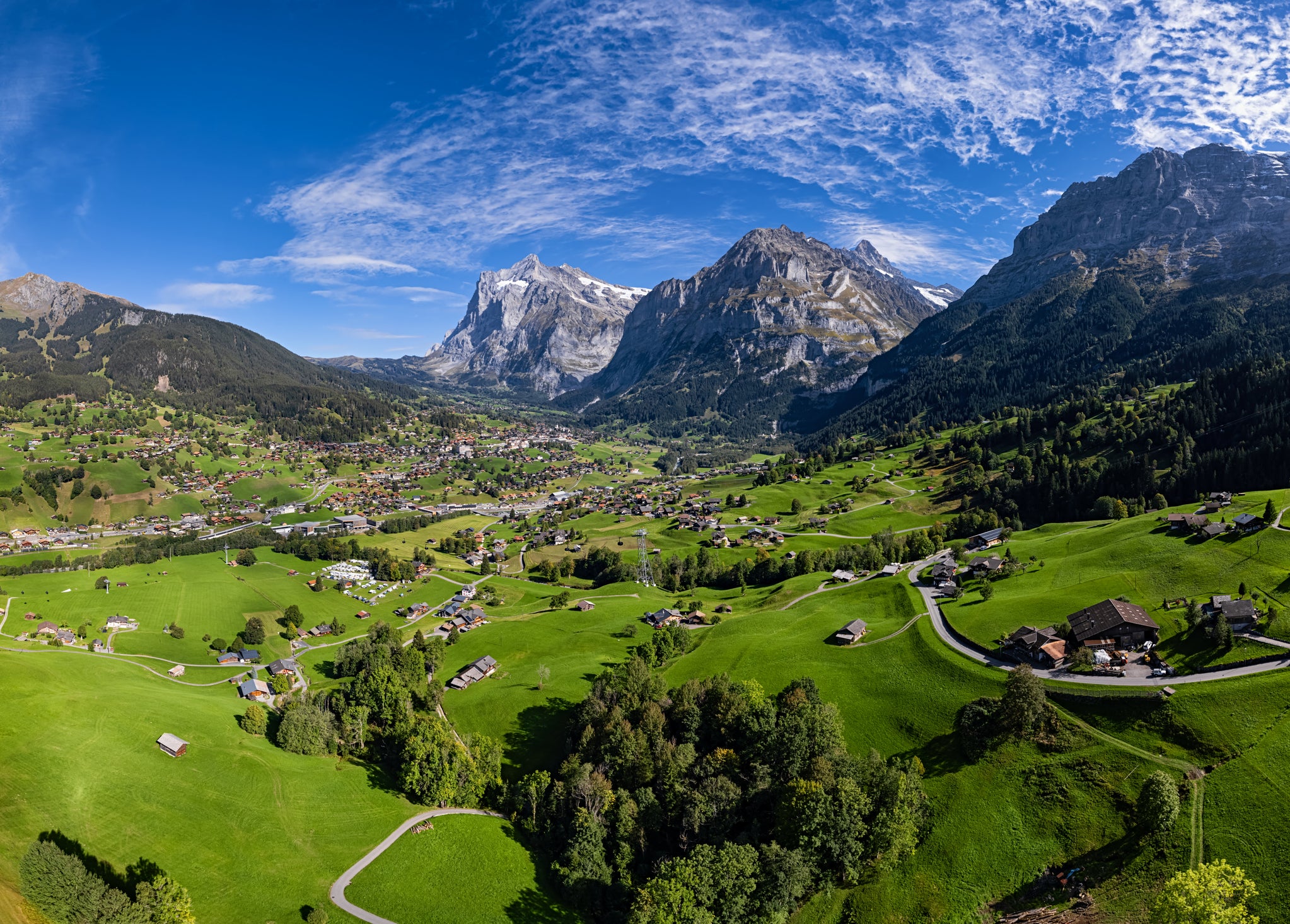
Titanic peaks tower over Grindelwald , including the Eiger (right), Mettenberg (middle), and the Wetterhorn (far left) (Getty Images)
Be wary of neck strain if you visit Grindelwald in the Jungfrau region, because there’s a backdrop you’ll find yourself gazing up at again and again — a row of titanic peaks that includes the Wetterhorn (12,113ft), Mettenberg (10,183ft) and the 13,015-foot Eiger, whose epic North Face looms over the village.
Even in the context of Switzerland’s jaw-dropping scenery, this one stands apart.
What’s more, you can even take a cable car — the Eiger Express — from the valley floor (around 3,400ft) up the flank of the North Face to the Eiger Glacier Station (7,612ft).
From there, you can ride the improbable Jungfraubahn cogwheel train. This stops at viewing windows cut into the Eiger’s North Face before terminating at Jungfraujoch, which at 11,332ft is Europe’s highest railway station.
Step outside to behold the monumental Aletsch Glacier before returning to the storybook village you set out from, where cowbells ring, lanterns glow in windows and the smell of freshly baked bread fills the air.
Where to stay
Belvedere Swiss Quality Hotel has an indoor swimming pool, an outdoor hot tub, and balcony rooms with mountain views, some facing the epic North Face of the Eiger.
**Read more: **Welcome to the Portuguese archipelago paradise
7. Rhine Falls
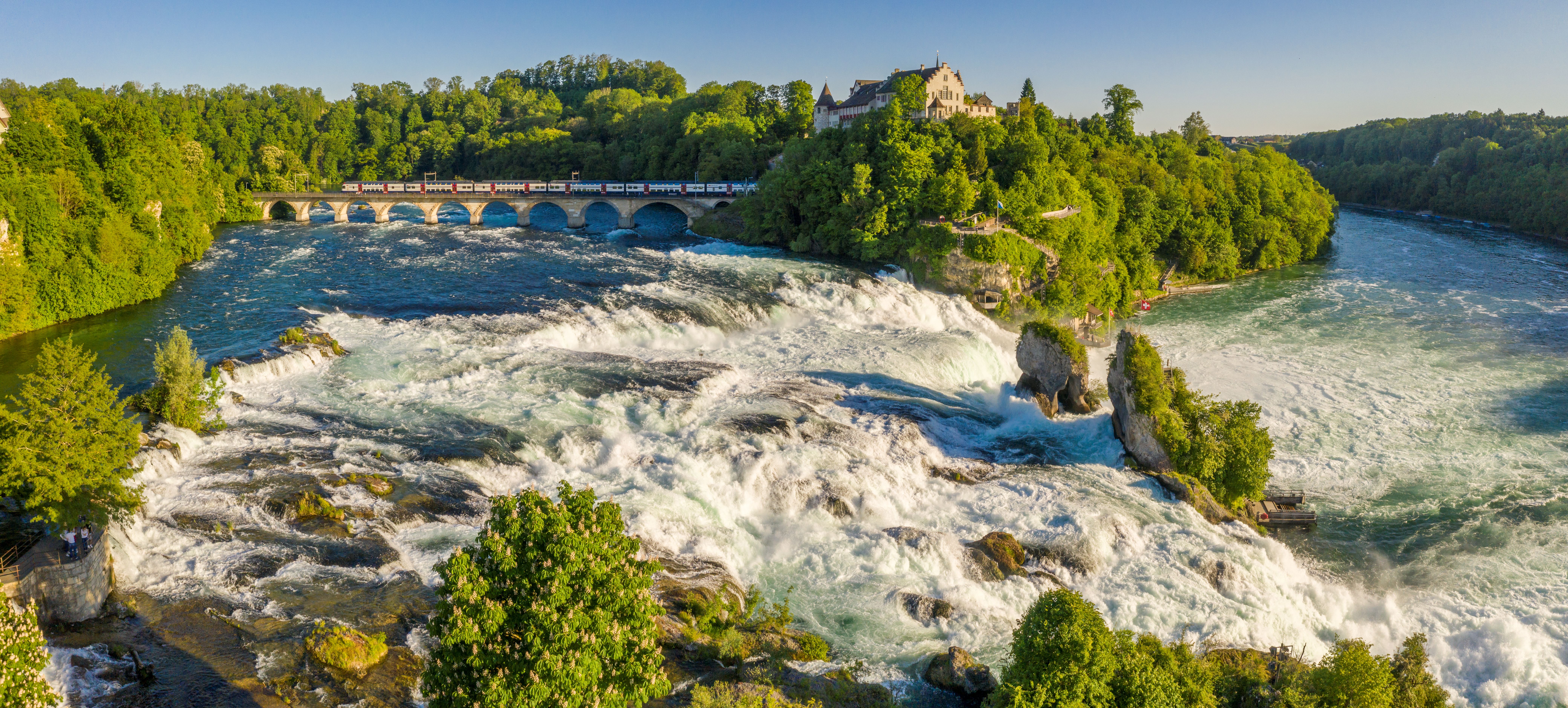
The Rhine Falls will leave you awed (Swiss Travel System/Jan Geerk)
The Rhine Falls just outside the town of Schaffhausen is officially Europe’s largest waterfall, with several hundred cubic yards of water thundering every second over a drop of about 75 feet and stretching nearly 500 feet across.
The Swiss have smartly capitalized on the spectacle, which is formed by tectonic shifts in the Ice Age, making sure that tourists can see and feel its power up close.
Boat trips bring you almost face to face with the torrents and even to the remarkable rock island that’s withstood the raging waters for centuries, while viewing platforms extend so far out you’ll feel as if you’re hovering over roaring cascades.
Another unforgettable vantage point is from Schloss Laufen am Rheinfall castle. It was built on a rocky spur above the falls during medieval times, but today has a few modifications for falls aficionados — walkways and glass elevators that descend toward the spray.
Whichever experience you opt for, the elemental power of the Rhine Falls will leave you awed.
Where to stay
Vienna House by Wyndham zur Bleiche Schaffhausen is a modern four-star hotel and located within easy walking distance of the Rhine Falls.
**Read more: **10 of the best under-the-radar beaches in the US for crowd-free coastal escapes